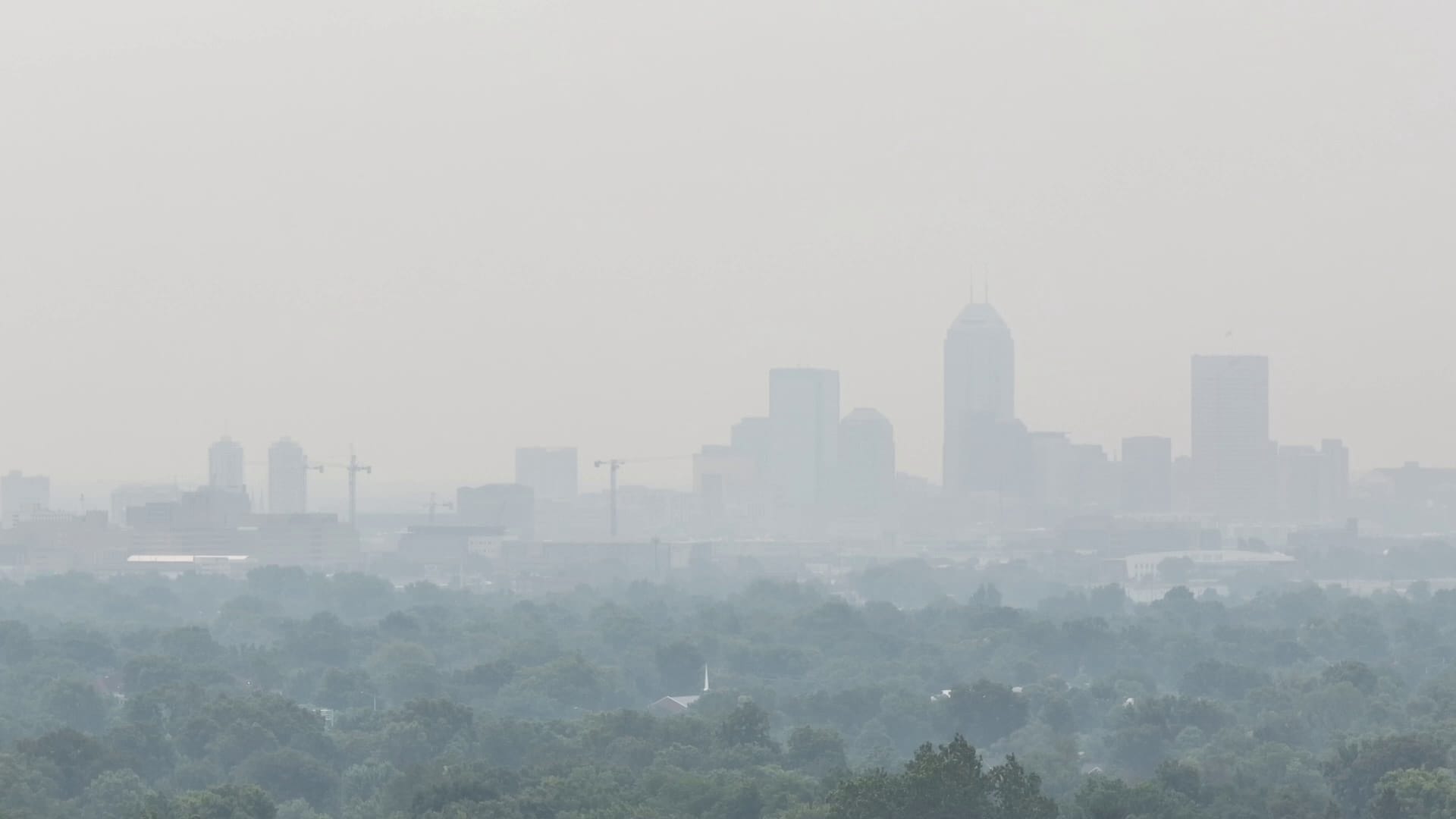Slightly smoky skies continue over Indiana
INDIANAPOLIS (WISH) — Indianapolis has been experiencing moderate levels of wildfire smoke this week, with the air quality index (AQI) hovering around 50. This is a stark contrast to the summer of 2023, when the AQI often soared to levels nearing 300, posing significant health risks. Last year, extensive wildfires across the Western United States and Canada led to prolonged periods of poor air quality in the Midwest, including Indiana. The high concentrations of fine particulate matter (PM2.5) resulted in widespread advisories and health concerns, particularly for sensitive groups such as children, the elderly, and those with pre-existing respiratory conditions.

The current smoke conditions in Indianapolis are primarily due to ongoing wildfires in the Northwest United States and Canada. These fires have been exacerbated by dry conditions and high temperatures, typical of the summer season. The smoke from these fires travels long distances, carried by prevailing winds, and affects air quality far from the source. Despite the lower AQI readings this week, the presence of wildfire smoke is still noticeable, causing a persistent haze over the city.

Looking ahead, the AQI in Indianapolis is expected to increase slightly by about 10 points in the coming days. While this rise will keep the air quality within a relatively safe range, it indicates that wildfire smoke will continue to impact the region. Even moderate levels of smoke can cause minor health issues, such as eye and throat irritation, especially for those spending extended periods outdoors.

It’s crucial to understand the potential health impacts of wildfire smoke, even at lower AQI levels. Higher concentrations of PM2.5 can worsen respiratory conditions, decrease lung function, and increase the risk of heart-related issues. Those with chronic health conditions should remain vigilant, staying indoors during peak smoke periods and using air purifiers to reduce indoor pollution.
The situation serves as a reminder of the broader environmental and health impacts of wildfires, highlighting the need for ongoing monitoring and preparedness. While current conditions are manageable, the unpredictability of wildfire activity means that staying informed and taking proactive measures is essential for protecting public health during the wildfire season.



